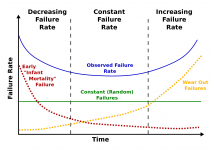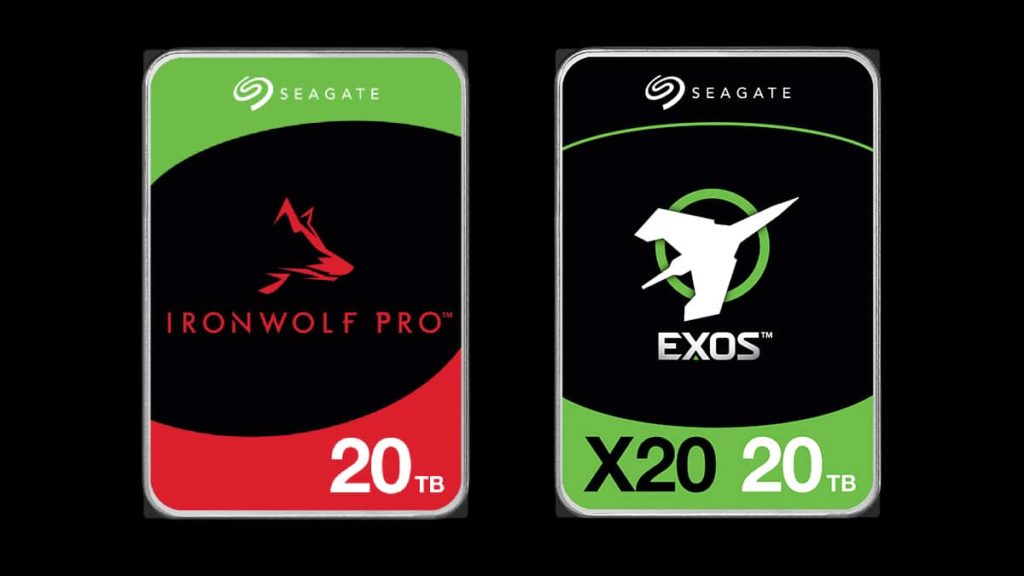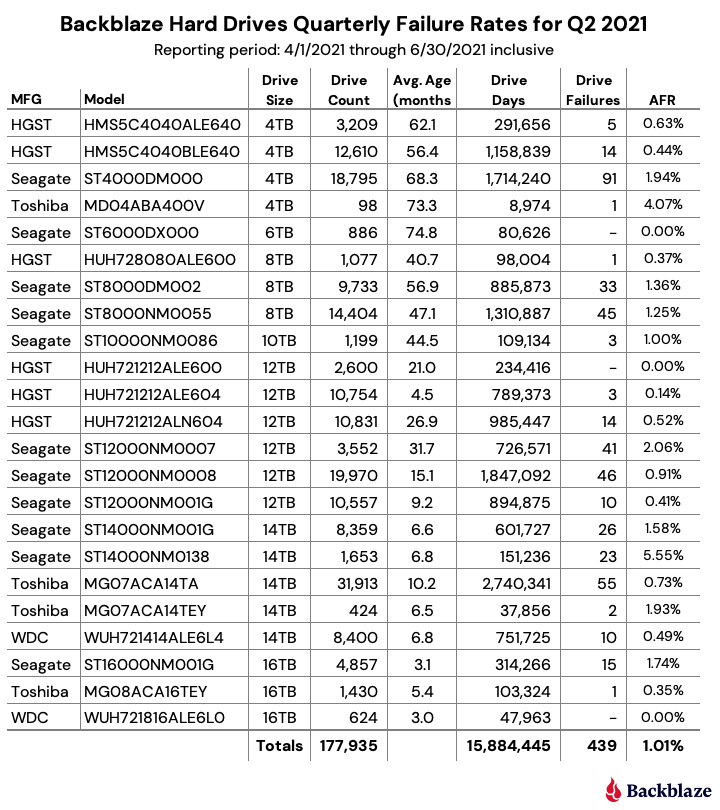That's good. I don't know though. Just a quick look at Backblaze. They seem to have more Seagates than other brands, so there is that, but those failure rates are also pretty consistently higher. Just kinda eyeballing it - 1% seems to be the over/under, with almost every Seagate over, and almost every "Other" under.
We review the quarterly and lifetime failure rates for our 178,166 data drives and compare the failure rates of HDD and SSD boot drives.

www.backblaze.com
Yeah, it's tough to decode the meaning of this. On the one hand you can look at the AFR column and draw your conclusions from that, but that doesn't take into consideration where the drives are in their life cycle.
Like all products they are going to fail along the bathtub curve. Early teething failures, followed by a period of low failure rate, and then in the end, elevated wear-out failures.

So, drive age also has to be taken into consideration.
Also, it is not clear to me how they calculate that AFR.
If we take the drives that are closest to mine (I have the ST10000NM0016, but they are very similar to the ST10000NM0086 backblaze uses).
For the period they've had 3 drive failures out of 1,199 drives. They list this as 1.00% On what planet is three drives out of ~1200 1%? That's ~0.25% in my math... Actually, never mind. It looks like these are numbers for the quarter, so they probably annualize them by multiplying by 4.
Either way, I think the conclusion should be that HGST drives have lower failure rates than Seagate drives on average, and that really shouldn't be a surprise. HGST drives ahve a reputation for stellar reliability. They are also typically more expensive, so you have to consider that when shopping as well.
With a good RMA process and a well bilt storage pool with built in redundancy (and backups) Seagats failure rate here may be higher than HGST on average, but is still is low enough that it is not a problem. If a drive fails, you pull it, replace it, resilver and move on. If it is under warranty you RMA it for free, otherwise you buy a new one. You are going to have to do this regardless of which brand you buy, so does having it happen slightly more often with Seagate than with HGST really make a huge difference?
Also, it's notable that the newest HGST drives in their table are over 2 years old. Who knows if the latest ones will hold up to the same level of quality after WD bought them?
When I bought my Seagates I was a little concerned based on the historical high failure rates, but I did look at the backblaze table and determined they were close enough that it didn't make a practical difference. I would still need redundancy and need to be prepared to swap them out if one failed, either way, and the Seagates where quite a bit cheaper.
Thus far they haven't let me down.
I actually RMA'd one a while back because it was dropped from my pool with read and write errors, but it turns out that was a mistake. It was my backplane that was the problem, not the drive. Replaced the backplane and everything is smooth again. At least I learned that their RMA process is pretty painless if I ever need to use it.



